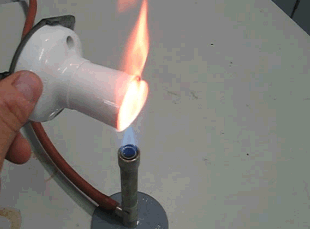Plastics are man made chemicals that are extremely useful in every day life. They have many uses that range from bumper bars on vehicles to foam cups. All plastics have one thing in common, they are made up of giant molecules known as polymers. These polymers are made by linking smaller molecules, known as monomers, end to end. The chemical reaction by which these monomers link to form polymers is called polymerisation.
Plastics fall into two categories, thermoplastics and thermosetting plastics. Thermoplastics melt when heated and are moulded by heat. Thermosetting plastics do not melt when heated and are used in things such as oven door handles, cooking pot holders and generally with any item that is exposed to high temperatures. Unlike thermoplastics that can be recycledc, heated and remoulded, thermosetting plastics can not be recycled or remoulded. Plastics products also include fibres, such as nylon and polyesters which are used to make ropes and clothing. Still other plastics(polyethene) are drawn into fine films that are used for wrapping food. Still other polymers exhibit elastic properties and are called elastomers.
Plastics are cheap and this is the major reason why they are widely used. Plastics have many different properties. These properties depend on the polymer structure of the each plastic. Different types of plastics have different properties and therefore are moulded in different ways.
Nylon
Making a rubber ball
Making slime
Making GakiStuff
Making chemical snakes
Hydrogels
Click to see a thermosetting plastic being heated.
Click to see a thermoplastic being heated.
What type of plastic do you
think a power point is made from?
Click to see a plastic power point being heated.
The animation on the right shows a light fitting under extreme heat. Describe
if the plastic is thermosetting or thermoplastic.
What are the necessary properties of this plastic that make it useful for
use in electrical wiring.

Once you have made the rubber ball and the GakiStuff, in the activities above, compare the properties of each.
Latex
ball |
GakiStuff |
|
| Can the substance be stretched and returned to its original shape? | |
|
| Will the substance melt? | |
|
| Will the substance change its shape to that of its container? | ||
| Can the substance form long fibers or is it a 3 dimensional structure. | ||
| Can the substance be pulled apart easily? | ||
| Once pulled apart can the plastic be reset? |
From your observation above explain the type of bonding holding the polymers of each plastic together.
Use your description of each bonding to explain the properties of each plastic.